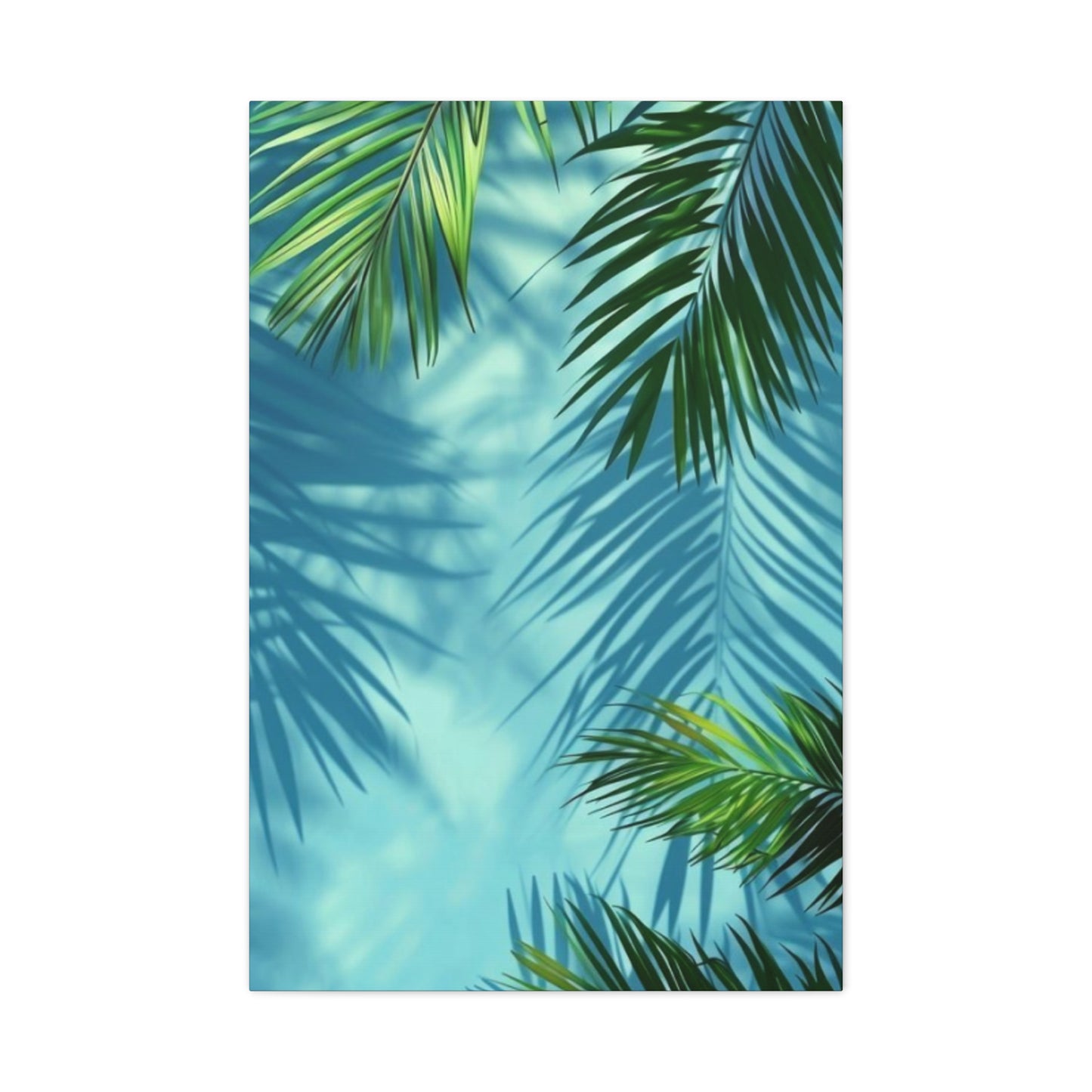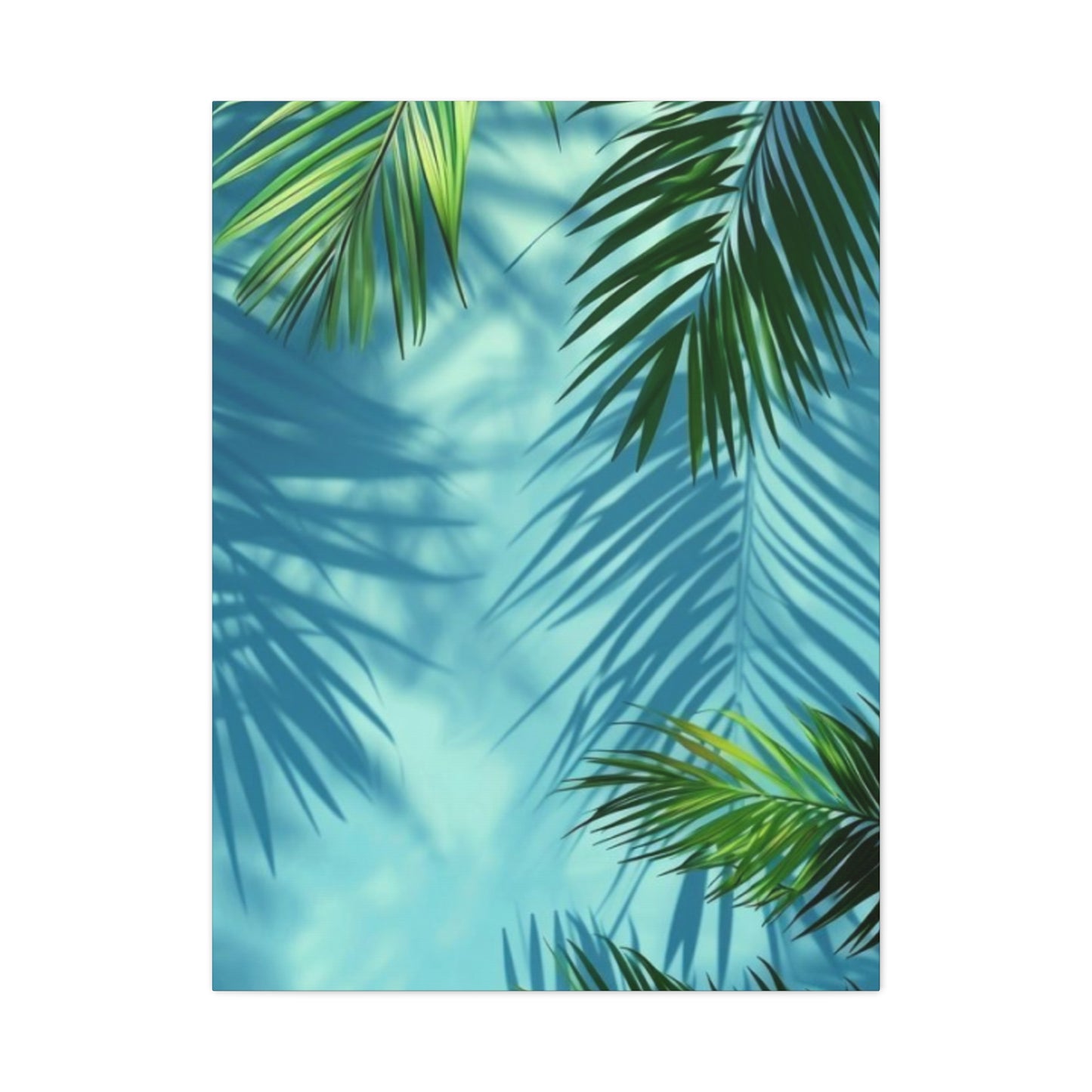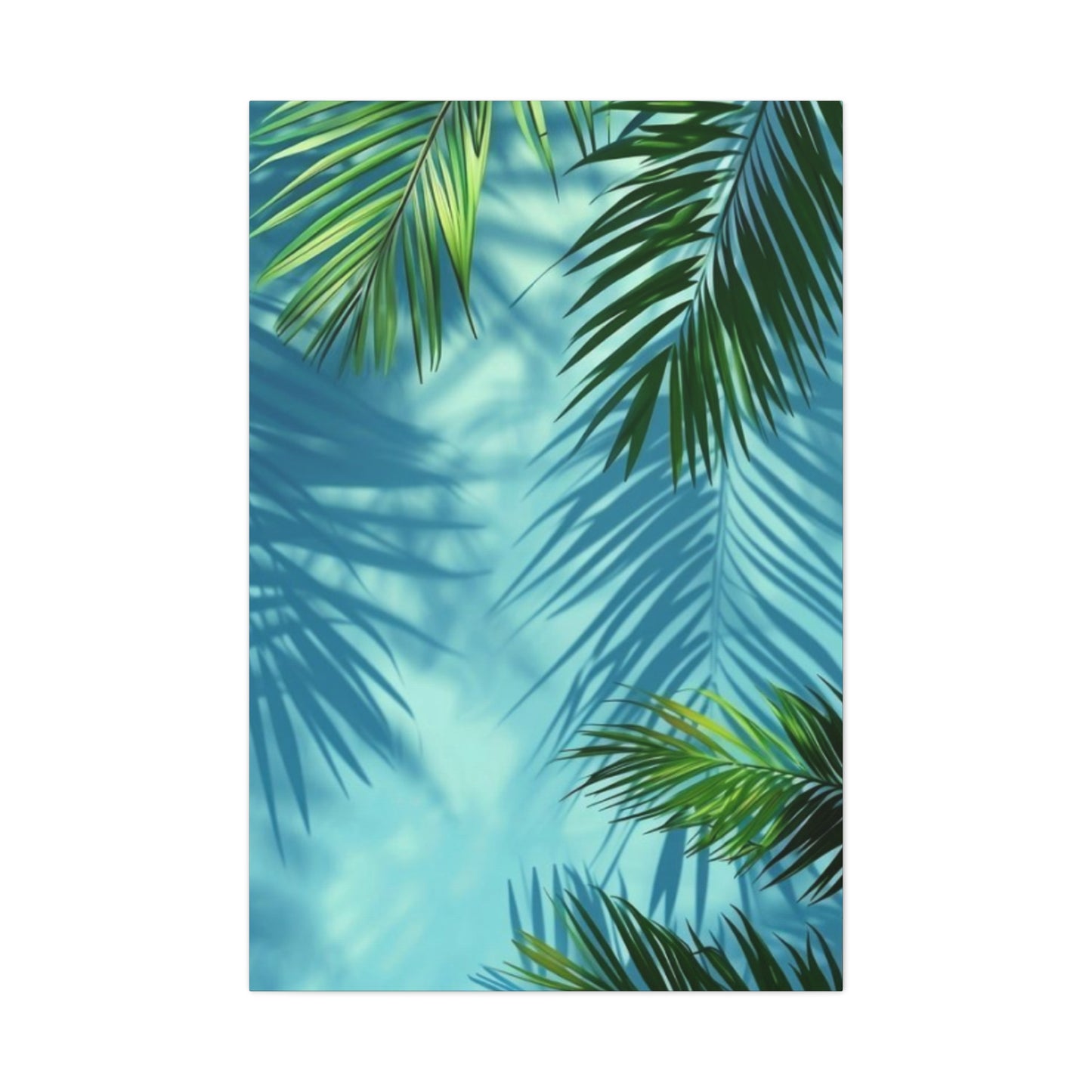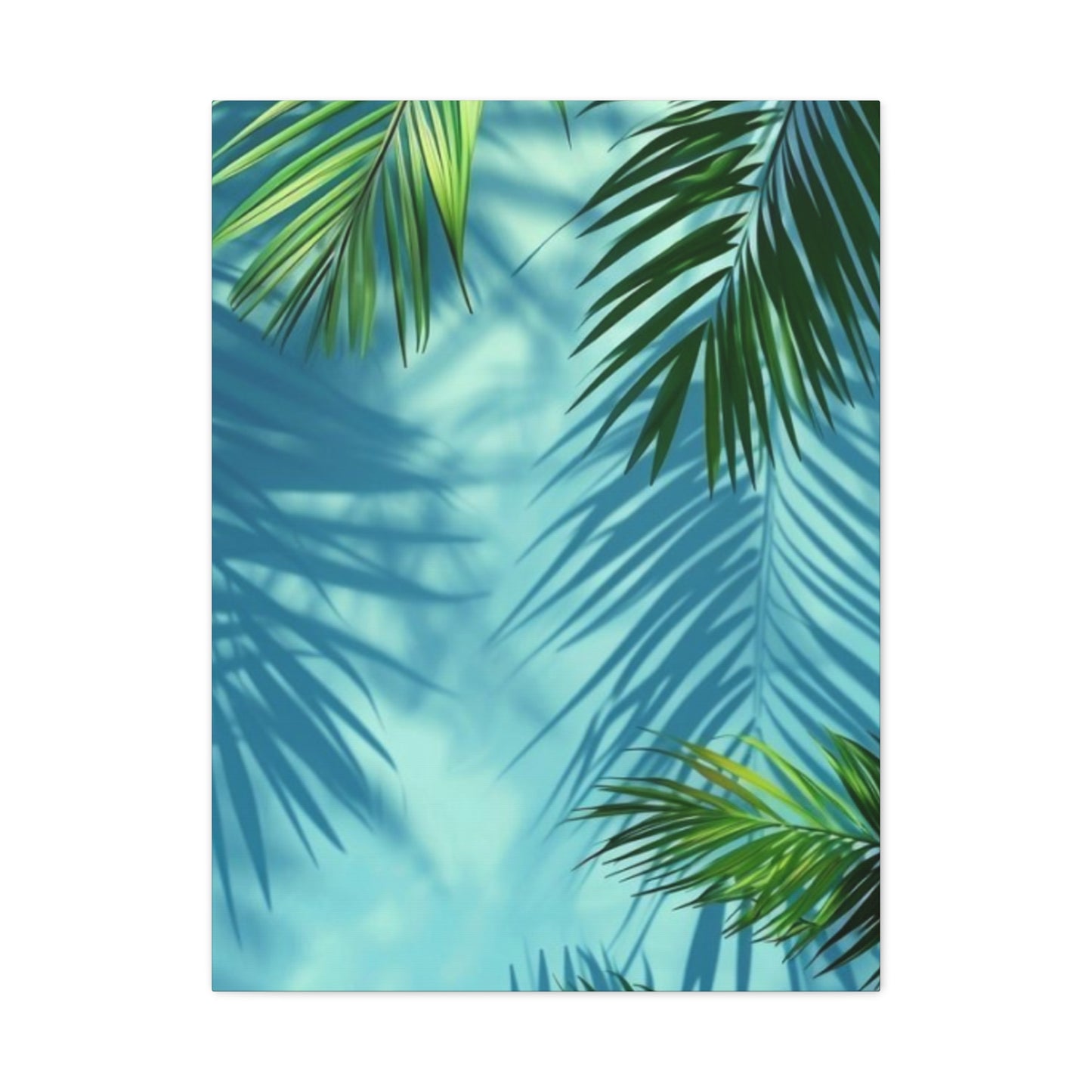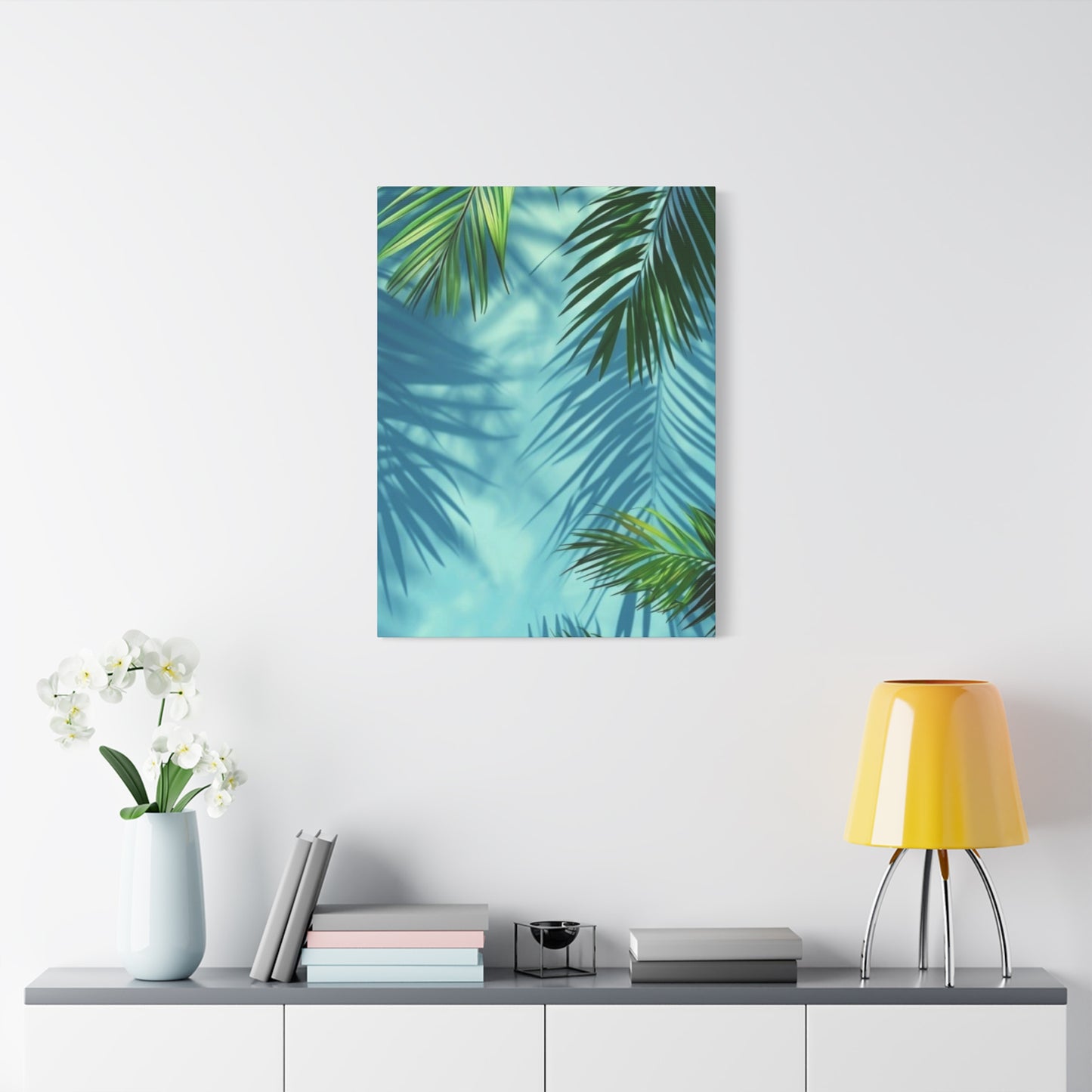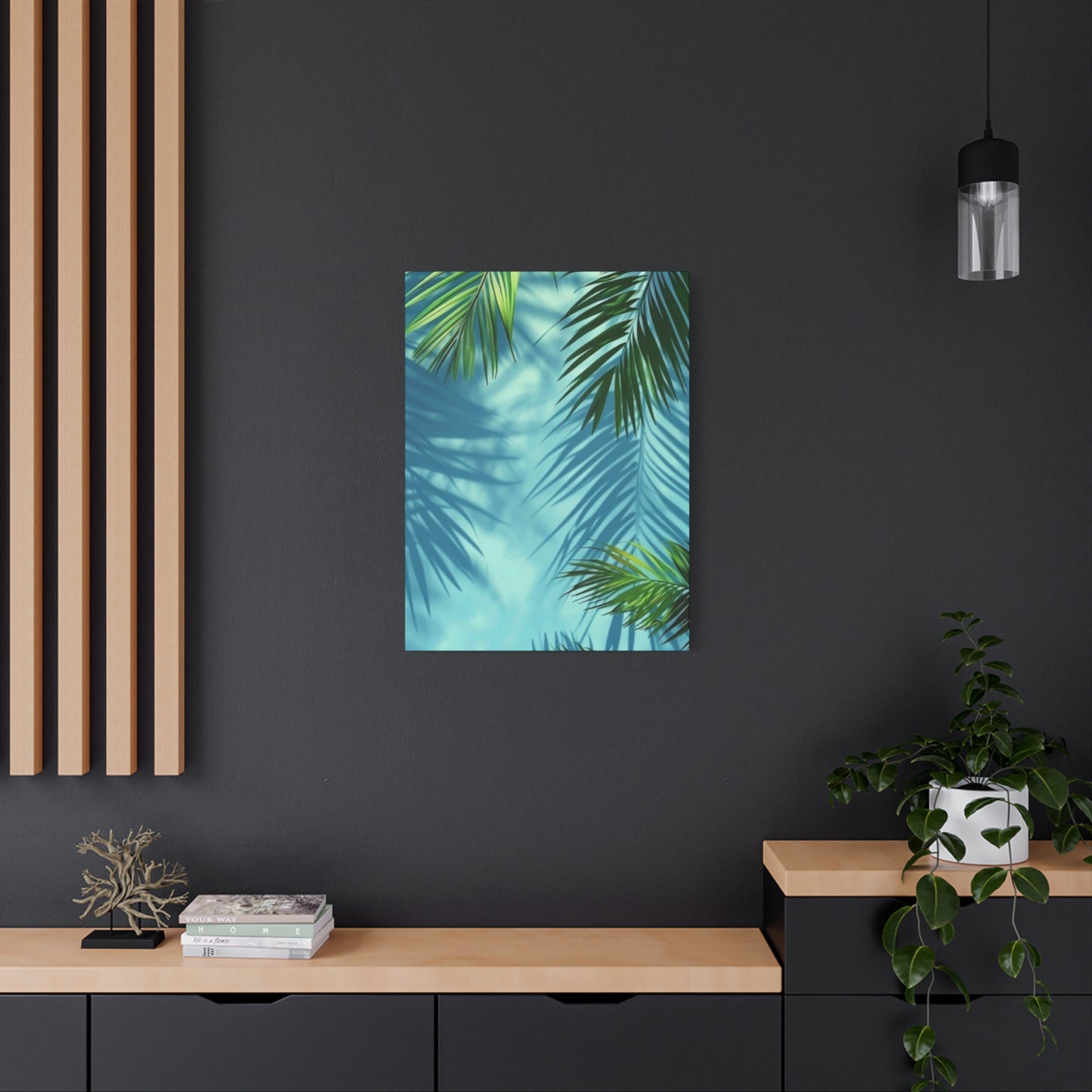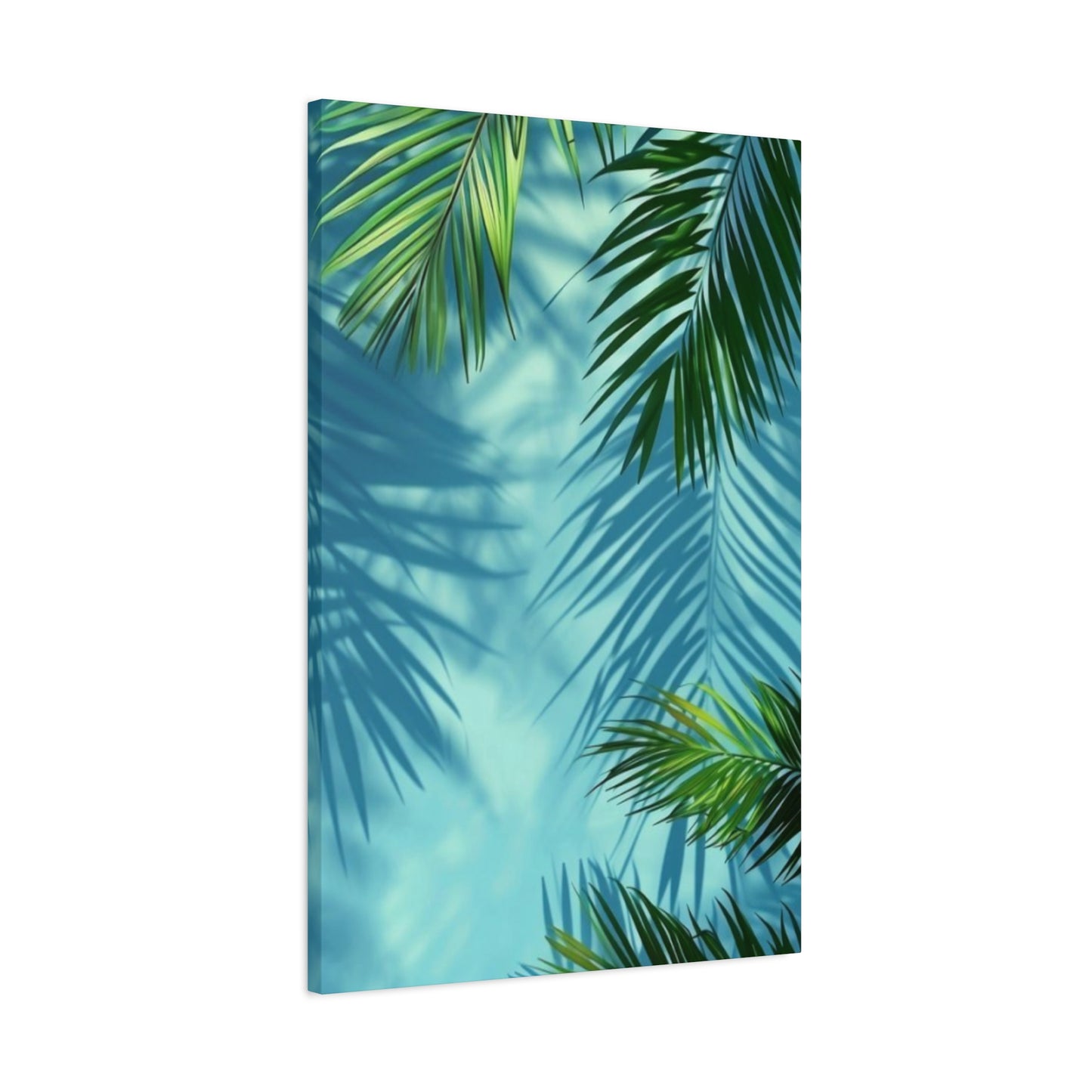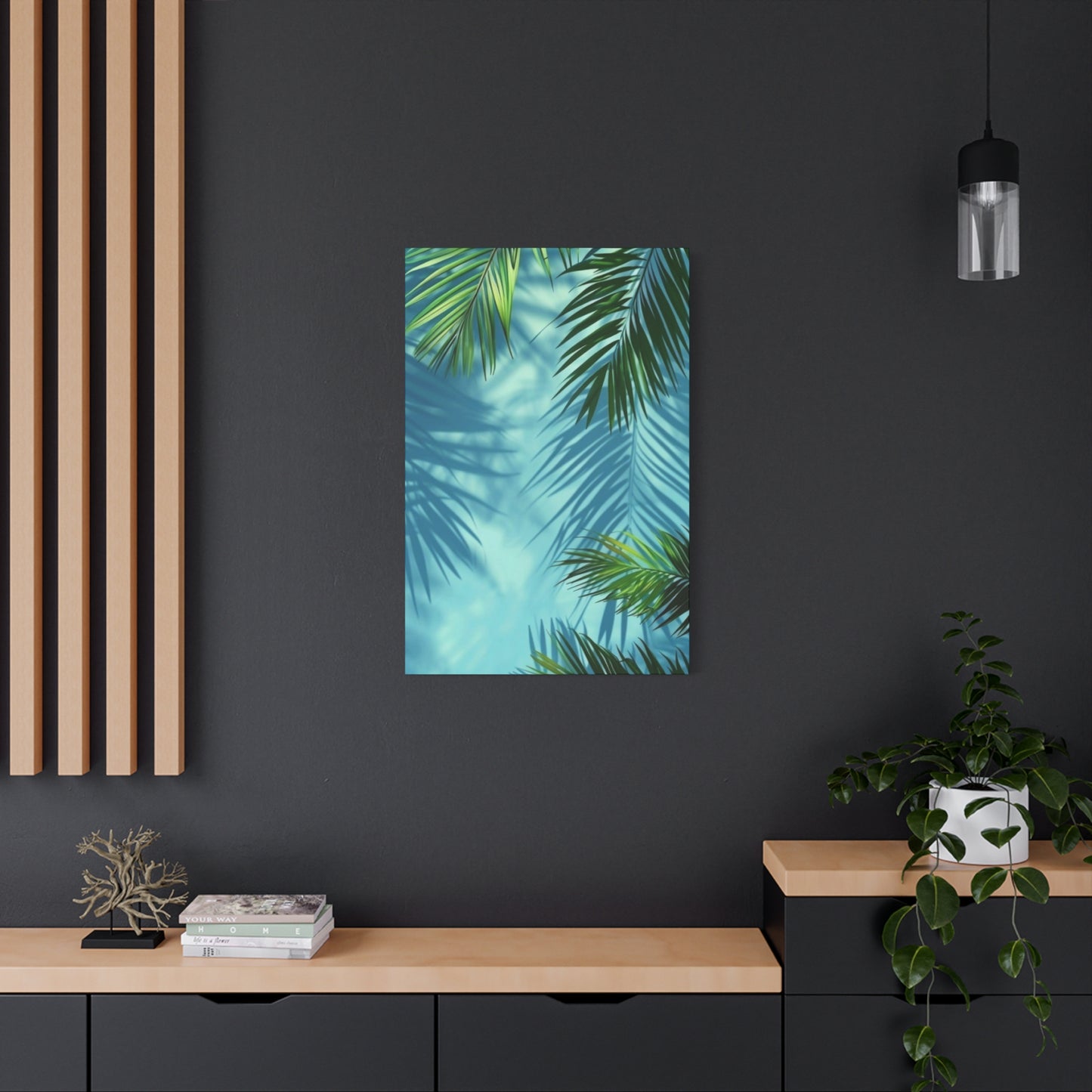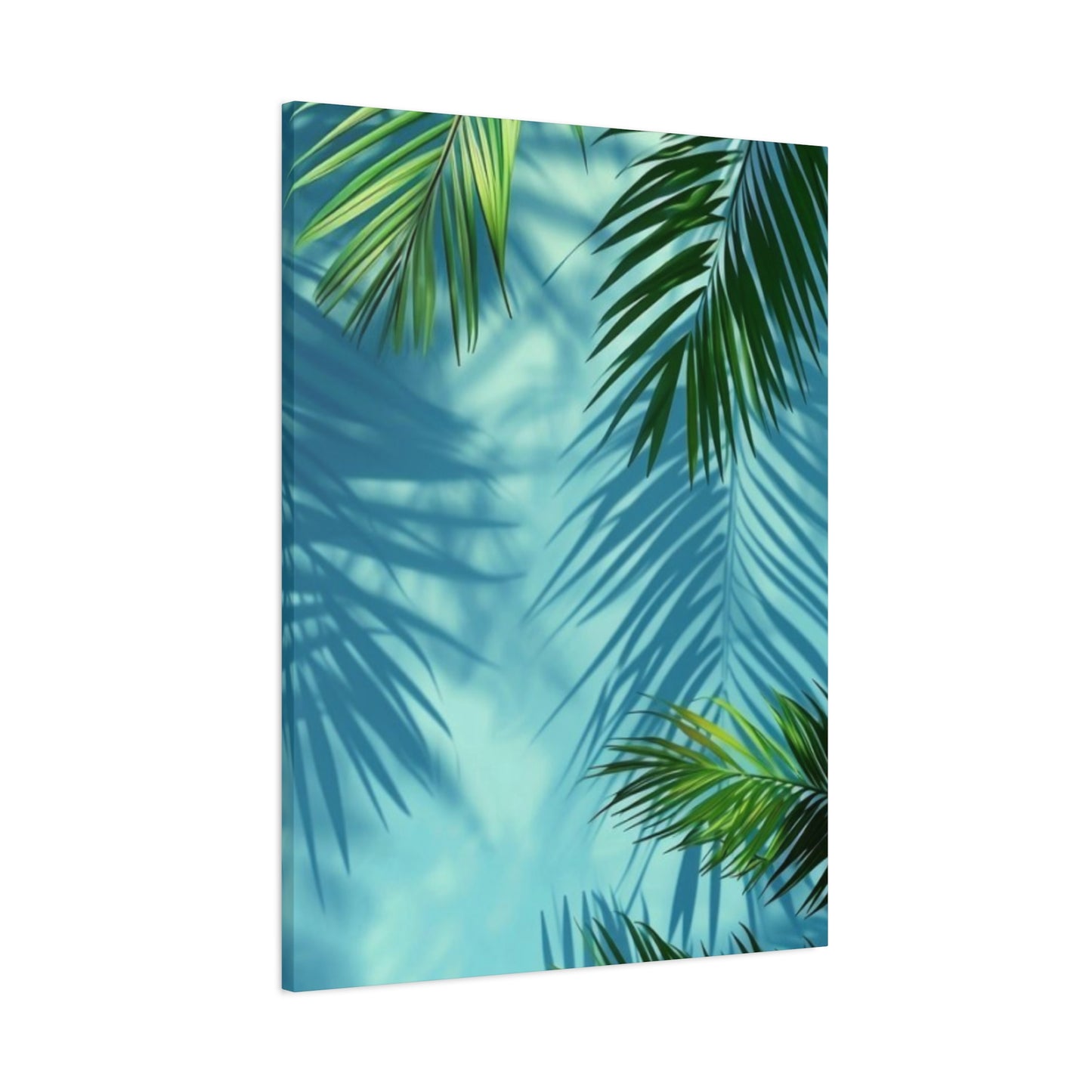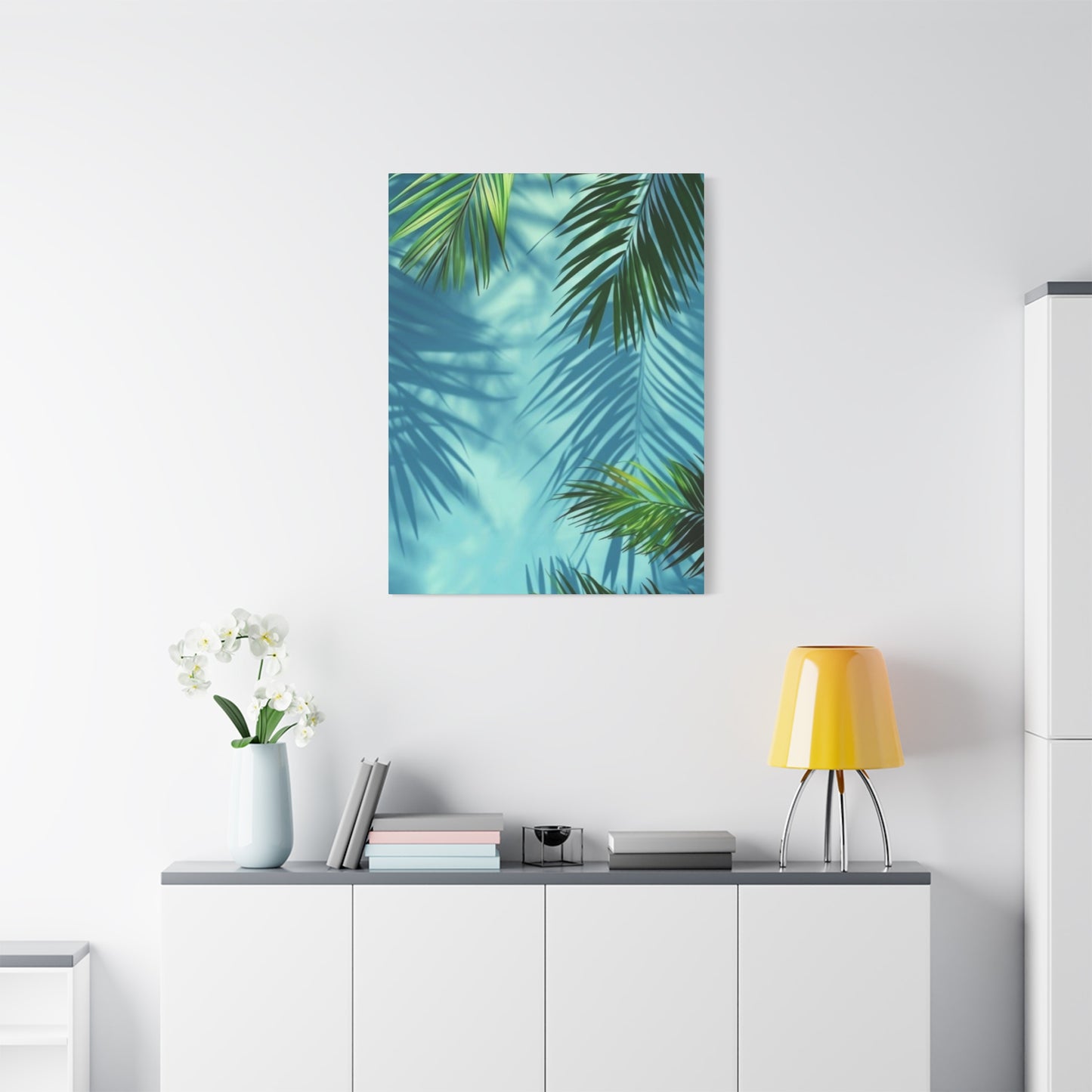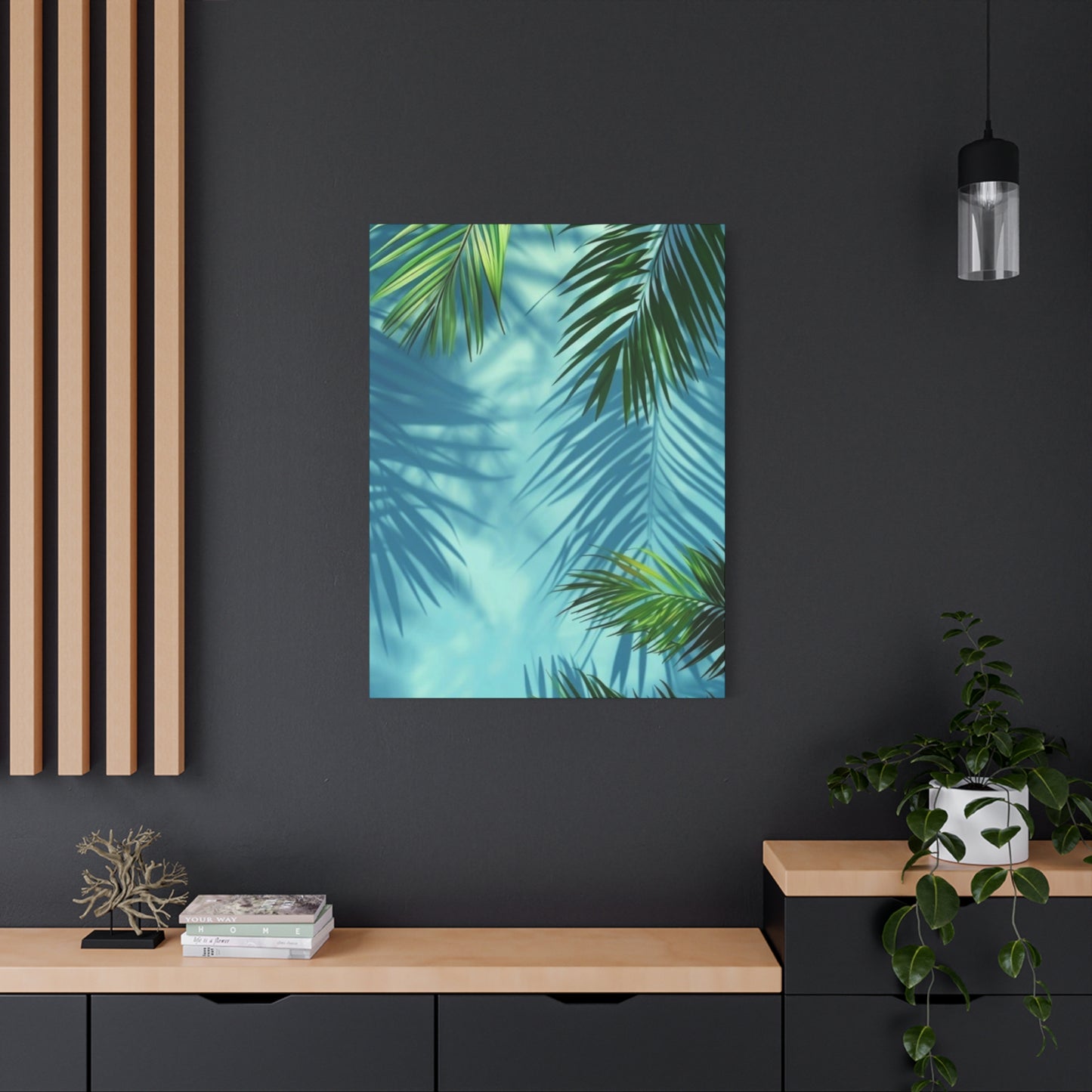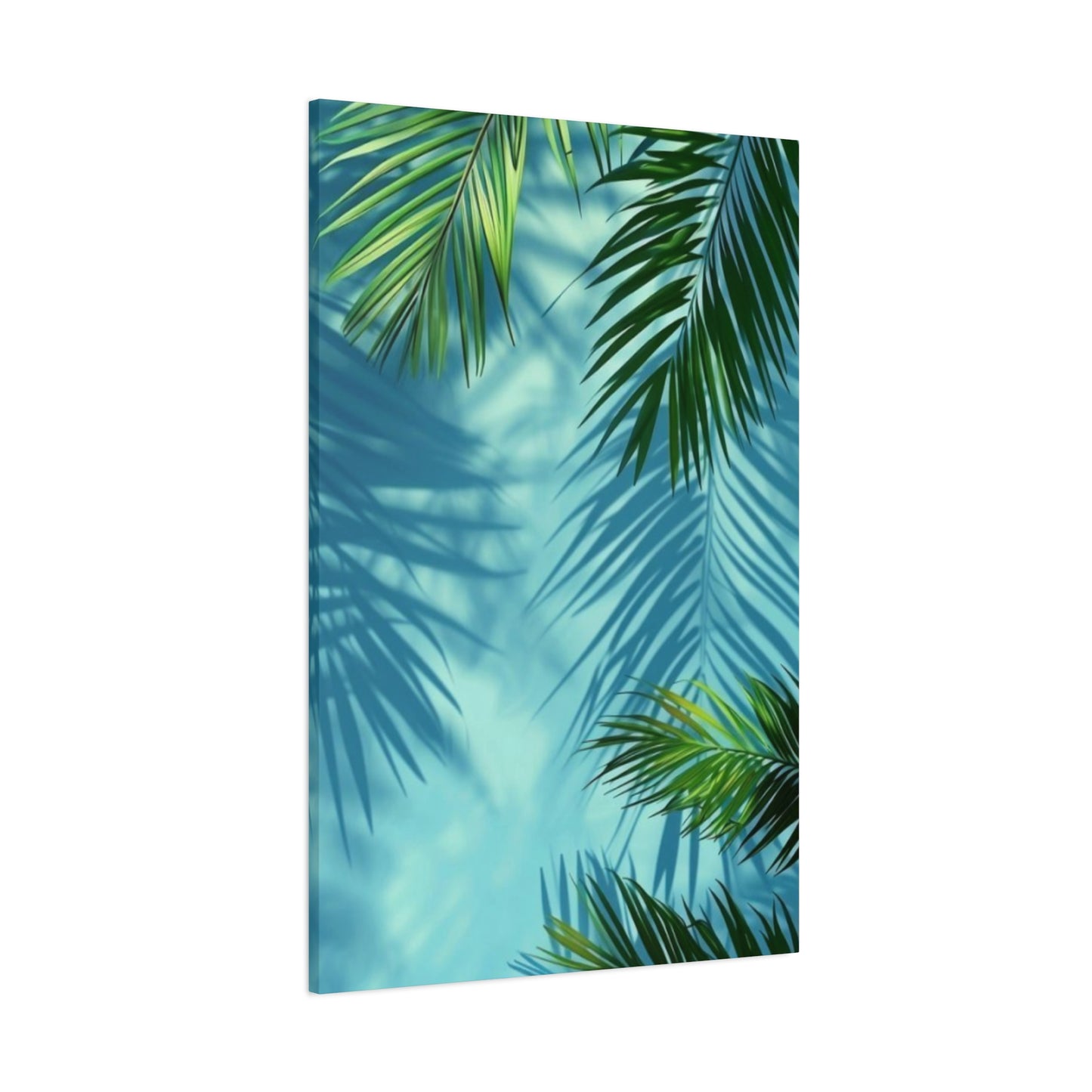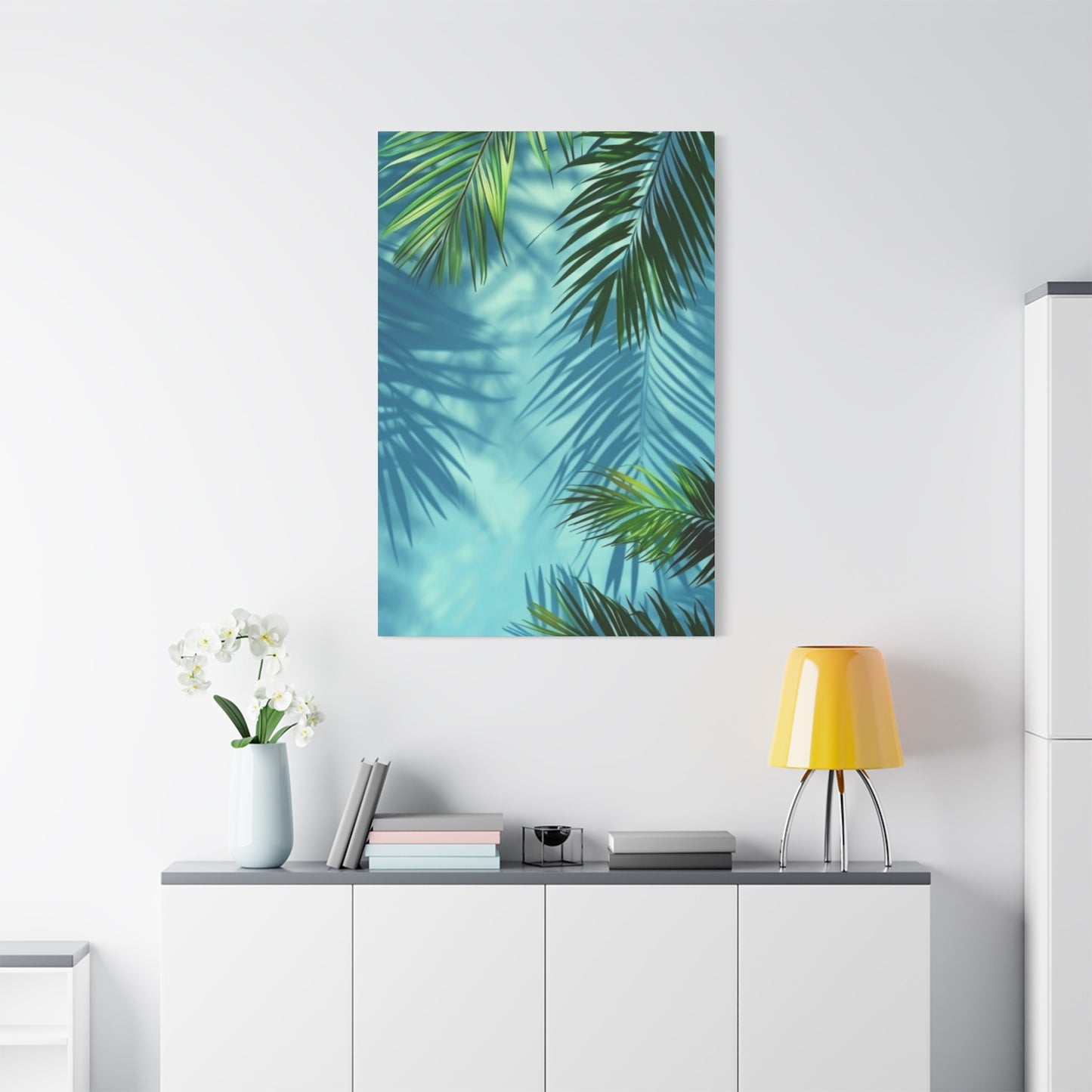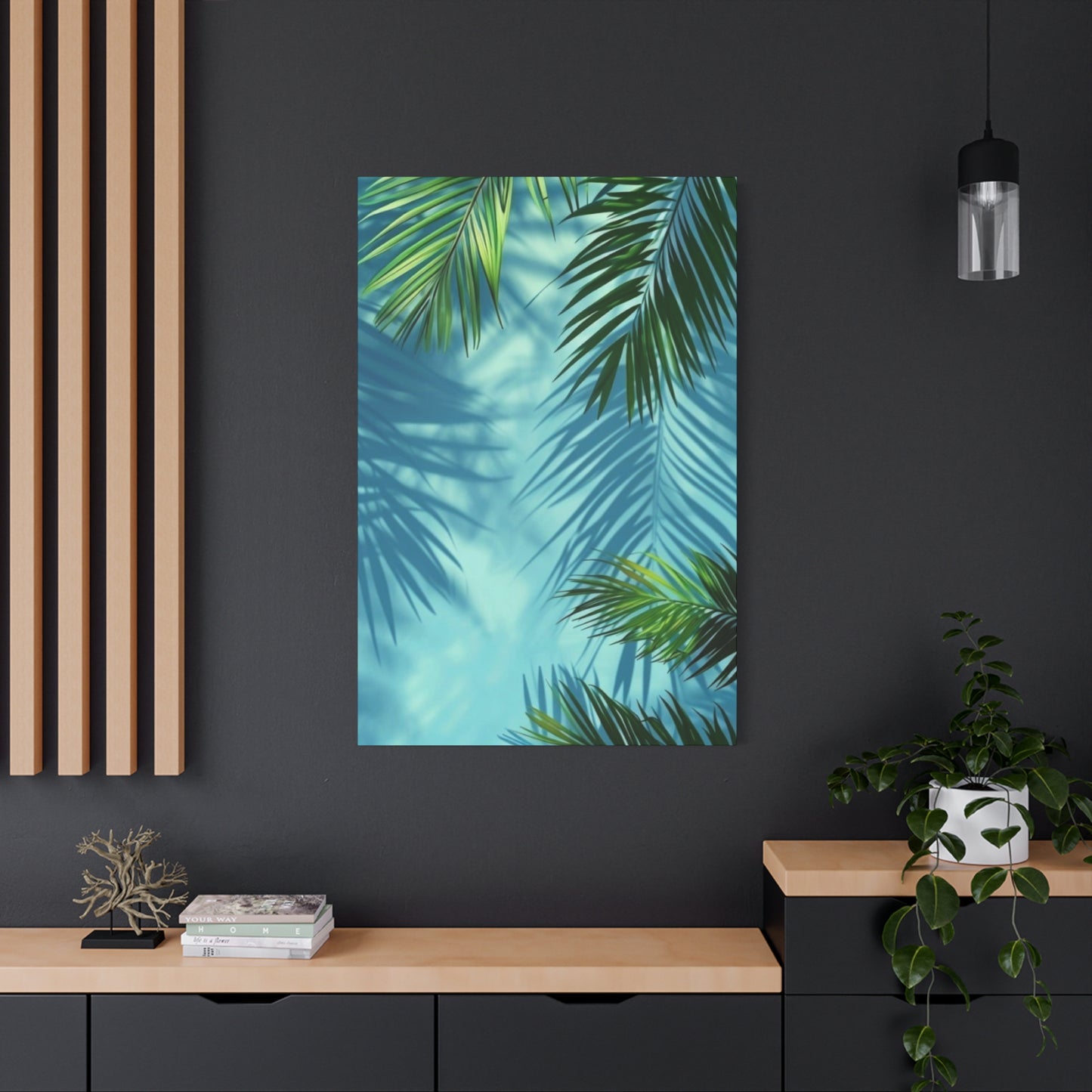Capturing Nature's Elegance: Palm Tree Shadows Reflected in Pool Wall art as Modern Interior Design
The captivating aesthetic of the shadow of a palm tree in pool wall art has emerged as one of the most sought-after design elements in contemporary interior decoration. This artistic concept brings the serene beauty of tropical landscapes directly into living spaces, creating an atmosphere of tranquility and sophistication. The interplay between light, water, and natural silhouettes produces a mesmerizing visual effect that resonates with homeowners seeking to establish a connection with nature while maintaining modern design sensibilities.
The phenomenon of palm tree shadows dancing across pool surfaces represents more than just a photographic moment. It embodies the essence of relaxation, vacation memories, and the timeless appeal of coastal living. When translated into wall art, these images carry the power to transform ordinary rooms into extraordinary sanctuaries that evoke feelings of peace and escapism.
The Artistic Appeal Behind Aquatic Shadow Imagery
The visual composition of palm fronds casting their distinctive shapes onto shimmering water surfaces creates a natural artwork that photographers and artists have long admired. The organic patterns formed by these shadows possess an inherent beauty that appeals to human aesthetic sensibilities. The gentle curves of palm leaves, the way light filters through their structure, and how these elements interact with water's reflective properties combine to produce images of remarkable depth and interest.
This type of imagery works exceptionally well in residential settings because it balances structure with fluidity. The recognizable silhouette of palm trees provides a focal point, while the water's surface adds texture and movement to the composition. The result is artwork that feels both grounded and ethereal, making it suitable for various interior design approaches from minimalist to maximalist aesthetics.
The popularity of this art form also stems from its ability to evoke specific emotional responses. Research in environmental psychology suggests that images of nature, particularly those featuring water elements, can reduce stress levels and promote feelings of well-being. The shadow of palm tree in pool wall art leverages these psychological benefits while offering visual sophistication that elevates interior spaces.
Ideal Room Placements for Maximum Visual Impact
Strategic placement of shadow of palm tree in pool wall art determines how effectively it enhances your living environment. The artwork performs exceptionally well in spaces where relaxation is the primary function. Master bedrooms benefit immensely from this imagery, as the calming qualities of water and nature imagery can contribute to better sleep quality and a more restful atmosphere.
Living rooms and family gathering spaces also serve as excellent locations for this type of art. The imagery sparks conversation while creating a welcoming environment that encourages relaxation and social connection. When placed above seating areas, the artwork draws the eye upward, adding vertical interest to the room and making ceilings appear higher.
Bathrooms present particularly appropriate settings for pool-themed artwork, as the subject matter naturally complements the room's function. The presence of water imagery in a space dedicated to bathing and personal care creates thematic coherence. Even small powder rooms can benefit from a carefully selected piece that brings a sense of luxury and resort-style elegance to everyday routines.
Home offices have increasingly incorporated nature-inspired artwork as remote work becomes more prevalent. The shadow of palm tree in pool wall art offers a visual escape during work hours, providing a mental break when glancing away from computer screens. This type of imagery can help maintain focus by creating a calm environment while simultaneously offering a momentary transportation to more peaceful settings.
Entryways and hallways, often overlooked in decorating schemes, can be dramatically enhanced with this artwork. These transitional spaces benefit from images that set a tone for the rest of the home. Pool shadow imagery immediately communicates a sense of style and tranquility, welcoming residents and guests into the living space with an impression of thoughtful design.
Lighting Techniques to Enhance Water Imagery
Proper illumination can transform the shadow of palm tree in pool wall art from simple decoration into a captivating focal point. Picture lights mounted directly above the artwork provide focused illumination that highlights details and colors while creating a gallery-like presentation. These fixtures work particularly well with framed pieces, adding dimension through strategic shadowing around the frame.
Track lighting offers flexibility, allowing you to adjust beam angles and intensity to achieve the desired effect. Positioning lights at a thirty-degree angle helps minimize glare on glossy surfaces like acrylic while ensuring even illumination across the entire piece. Multiple fixtures can create layered lighting that adds drama to larger installations.
Ambient lighting in the room should complement rather than compete with the artwork. Dimmer switches allow you to adjust overall room brightness, ensuring the artwork remains visible without being washed out during daytime hours. During evening hours, reducing ambient light while maintaining artwork illumination creates a striking effect that draws attention to the piece.
Natural light can beautifully enhance pool shadow imagery, particularly when the artwork is positioned perpendicular to windows rather than directly across from them. This placement prevents direct glare while allowing natural light to illuminate the piece from the side, creating subtle shadows that add dimension. However, consider UV-protective glass or coatings to prevent fading in spaces with significant sun exposure.
LED strip lighting behind the artwork creates a contemporary halo effect that makes the piece appear to float off the wall. This backlighting technique works exceptionally well with acrylic or metal prints, adding depth and creating ambient lighting that contributes to the room's overall illumination while highlighting the artwork.
Seasonal Styling Around Tropical Water Imagery
While the shadow of palm trees in pool wall art maintains year-round appeal, adjusting surrounding decor seasonally keeps spaces feeling fresh and responsive to changing moods. During summer months, embrace the full tropical aesthetic by incorporating bright accent colors, lightweight fabrics, and additional aquatic or beach-themed accessories. This approach creates an immersive environment that celebrates warm weather and outdoor living.
Autumn presents opportunities to warm up the space while maintaining the artwork as a focal point. Introduce burnt orange, terracotta, or warm brown accents through textiles and decorative objects. These colors complement the blues in the artwork while bringing seasonal richness. Natural elements like wooden bowls, woven baskets, or ceramic vases add texture that feels appropriate for cooler months.
Winter styling can embrace the cooler aspects of the color palette, leaning into icy blues and silvers that align with the season. Metallic accents in silver or chrome, faux fur throws, and crystal or glass accessories create a sophisticated winter aesthetic that feels cohesive with water imagery. This approach transforms the tropical associations of palm trees into something more ethereal and season-appropriate.
Spring offers chances to introduce fresh, vibrant energy through florals and verdant greens that complement the natural elements in the artwork. Light, airy fabrics in white or pastel shades create a renewed feeling, while fresh flowers or branches bring living elements that echo the botanical aspects of palm trees. This seasonal approach feels optimistic and aligned with themes of growth and renewal.
The key to successful seasonal styling lies in changing accent pieces rather than major furnishings. Switching out throw pillows, blankets, small decorative objects, and occasionally area rugs allows the space to evolve throughout the year while maintaining the shadow of palm tree in pool wall art as a constant, anchoring element that provides continuity.
Creating Multi-Panel Installations for Dramatic Effect
Expanding beyond single-image presentations, multi-panel installations of shadow of palm tree in pool wall art offer opportunities for dramatic visual statements. Triptych arrangements, where the image is divided across three panels, create movement and dimension that single pieces cannot achieve. The breaks between panels add contemporary appeal while allowing for creative arrangements that can accommodate architectural features like corners or wall outlets.
Large-scale installations spanning five or more panels transform entire walls into immersive experiences. This approach works magnificently in open-concept spaces, behind sectional sofas, or in primary bedrooms where the artwork can serve as a headboard alternative. The expanded canvas allows viewers to feel enveloped by the imagery, creating a more powerful emotional response.
Varying panel sizes within a single installation adds visual interest and contemporary edge. Asymmetrical arrangements with panels of different widths or heights create dynamic compositions that feel curated and intentional. This approach works particularly well in modern interiors where unexpected arrangements align with overall design philosophies.
Depth can be introduced by mounting panels at different distances from the wall. Even slight variations of an inch or two create shadows and dimension that make the installation more sculptural. This technique works especially well with the subject matter, as the physical shadows created by the mounting echo the shadows depicted within the artwork itself.
Corner installations wrap the imagery around two adjoining walls, creating an immersive effect that makes the artwork feel more integrated into the architecture. This approach works well in rooms where a single large wall is unavailable or where you want to create a dedicated zone within an open space. The continuity of the image across the corner draws the eye and creates visual flow.
Photography Techniques Captured in This Art Form
Understanding the photographic techniques that create compelling shadow of palm tree in pool wall art helps in appreciating and selecting pieces. Overhead perspective is most common, with the photographer positioned to capture the shadow cast onto the water surface. This viewpoint emphasizes pattern and abstraction while minimizing distracting elements that might appear at eye level.
Timing is crucial in capturing these images. The angle of sunlight dramatically affects shadow appearance, with mid-morning and late afternoon typically providing the most dramatic results. During these times, shadows stretch and become more defined, creating stronger graphic elements within the composition. The quality of light also differs, with golden hour providing warmer tones that can enhance the overall mood.
Polarizing filters help photographers manage reflections and enhance color saturation in water. These tools reduce glare from the water surface, allowing the shadow details to remain visible while intensifying the blues. The resulting images have the rich, saturated colors that make pool photography so visually appealing.
Shutter speed decisions affect how water movement is captured. Faster shutter speeds freeze ripples and texture in the water surface, creating sharp detail and emphasizing the interaction between shadow and liquid. Slower shutter speeds create smoothing effects that give water a more serene, glass-like appearance. Both approaches have merits depending on the desired aesthetic.
Post-processing plays a significant role in preparing these images for display as wall art. Contrast adjustments ensure shadows remain distinct while highlights in the water retain detail. Color grading enhances the blues or introduces creative tonal shifts that make the artwork more distinctive. Clarity and sharpness adjustments ensure the piece maintains impact even when printed at large sizes.
Custom Photography Options for Personalized Artwork
While commercially available shadow of palm tree in pool wall art offers convenience and often professional quality, commissioning custom photography provides opportunities for truly unique pieces that reflect personal experiences and preferences. Working with photographers to create custom artwork ensures the final piece is sized perfectly for your space and captures the specific aesthetic vision you desire.
Personal pool documentation allows homeowners with pools to immortalize their own outdoor spaces in artwork. This approach creates deeply personal pieces that commemorate the home itself, transforming a familiar view into fine art. Local photographers often offer this service, understanding lighting conditions specific to your location and returning multiple times to capture ideal moments.
Vacation photography commissions provide ways to preserve travel memories in artistic formats suitable for display. Rather than standard snapshots, working with a photographer during vacation can result in professional-quality images that become meaningful artwork. The shadow of palm tree in pool wall art created from personal travel experiences carries emotional significance that generic images cannot replicate.
Technical specifications for custom work should be discussed upfront, including file resolution requirements for your intended display size, color profiles for accurate printing, and any stylistic preferences regarding processing. Professional photographers will ensure the final files meet technical requirements for large-format printing while maintaining artistic vision.
Licensing and reproduction rights require clear discussion when commissioning custom photography. Ensure you understand whether you are purchasing full rights to the image or limited rights for specific uses. For artwork intended solely for personal display, limited rights are typically sufficient and more affordable than purchasing full commercial rights.
Budget-Friendly Alternatives to Custom Art Pieces
While high-end shadow of palm tree in pool wall art offers exceptional quality, budget-conscious decorators have numerous options for achieving similar aesthetic impact. Print-on-demand services provide affordable access to thousands of images, allowing you to select and print designs in sizes appropriate for your space. These services typically offer various material options at price points significantly below custom or gallery artwork.
Digital downloads enable even greater cost savings, allowing you to purchase high-resolution image files and arrange printing locally. Many online marketplaces offer photographer-created images licensed for personal printing, providing professional quality at a fraction of traditional artwork costs. This approach requires more effort but maximizes budget efficiency.
DIY photography projects offer the ultimate in personalization and budget control. If you have access to pools with palm trees, even smartphone cameras can capture compelling images. Basic photo editing software can enhance your images, adjusting colors, contrast, and composition to create display-worthy artwork. This approach transforms personal photography into meaningful decor.
Large-format poster prints provide affordable options for renters or those who frequently change decor. While not offering the same longevity or quality as fine art prints, posters allow experimentation with this aesthetic at minimal cost. Inexpensive frames elevate poster presentations, making them appear more intentional and polished.
Thrift stores and online marketplaces sometimes offer existing artwork in this aesthetic at significant discounts. While selection is unpredictable, patient hunting can uncover quality pieces at fractions of retail prices. This approach also supports sustainable decorating practices by giving existing artwork new life rather than creating demand for new production.
Integration with Smart Home Lighting Systems
Modern technology enables shadow of palm tree in pool wall art to become even more dynamic through integration with smart lighting systems. Programmable lighting allows you to adjust artwork illumination throughout the day, creating different moods and ensuring the piece always appears its best regardless of natural light conditions.
Color-changing LED systems can introduce creative lighting effects that transform the artwork's appearance. While maintaining the integrity of the original image, subtle color washes can emphasize different aspects of the composition or create seasonal variations without changing the physical piece. Blue uplighting can intensify the aquatic feel during summer, while warmer tones might be introduced in winter.
Motion sensors automate artwork lighting, ensuring it is properly illuminated when rooms are occupied while conserving energy when spaces are empty. This functionality is particularly useful in hallways, bathrooms, or guest rooms where manual lighting control might be overlooked.
Voice control integration allows effortless adjustment of artwork lighting, enabling you to change scenes or adjust brightness without leaving seating areas or using physical switches. This convenience encourages more active engagement with lighting design, allowing the artwork to play different roles throughout the day.
Scheduling capabilities enable automated lighting changes that align with daily routines and natural light patterns. Artwork can be automatically highlighted during evening hours when it serves as a focal point, while lighting reduces during bright afternoon hours when natural light dominates. This intelligent management ensures optimal presentation while maximizing energy efficiency.
Addressing Common Design Challenges with This Artwork
While shadow of palm tree in pool wall art offers numerous design benefits, certain challenges require thoughtful solutions. Color coordination in rooms with existing bold colors may require adjustments to prevent clashing. If changing wall colors is impractical, consider using the artwork in a more neutral space or selecting variations with tones that complement existing palette choices.
Scale mismatches occur when artwork size does not appropriately relate to the wall or surrounding furniture. Too-small pieces appear insignificant and fail to create the intended impact, while oversized artwork can overwhelm spaces and make rooms feel cramped. Creating paper templates in the exact size of the artwork and temporarily mounting them allows you to visualize scale before purchasing.
Competing focal points within a room can diminish the impact of artwork. If multiple elements vie for attention, the space may feel chaotic rather than designed. Evaluate the room and determine whether the artwork should be the primary focal point or play a supporting role, adjusting size and placement accordingly.
Style conflicts arise when artwork aesthetic does not align with existing decor. The tropical, relaxed nature of pool and palm imagery may feel incongruous in traditionally decorated spaces or rooms with industrial aesthetics. Consider whether you can bridge style differences through transitional elements or whether the artwork might be better suited to a different room.
Glare problems occur when glossy surfaces reflect light sources in ways that obscure the image. Repositioning the artwork, adjusting light fixture angles, or switching to a matte finish can resolve this issue. Testing light conditions at different times of day before permanently installing artwork helps avoid this common frustration.
Maintenance and Care for Lasting Beauty
Proper maintenance ensures shadow of palm tree in pool wall art retains its beauty for years or decades. Dust accumulation dulls colors and reduces visual impact, making regular cleaning essential. For most prints, gentle dusting with microfiber cloths removes surface debris without damaging the artwork. Avoid applying pressure or using rough materials that might scratch surfaces.
Glass-covered prints require cleaning products appropriate for glass, applied to the cloth rather than directly to the artwork to prevent liquid seepage behind the glass. Streak-free glass cleaners and lint-free cloths maintain clarity and ensure the artwork remains visible without distortion. Regular cleaning prevents buildup that becomes more difficult to remove over time.
Humidity control is particularly important for paper-based artworks, as excessive moisture can cause warping, mold growth, or degradation. In humid climates or bathroom installations, ensure adequate ventilation and consider dehumidifiers if necessary. Canvas and synthetic materials generally tolerate humidity better but still benefit from stable environmental conditions.
Direct sunlight poses fading risks even for archival-quality prints. If artwork is positioned where direct sun exposure is unavoidable, UV-protective glass or acrylic glazing provides essential protection. Alternatively, sheer window treatments can filter damaging UV rays while still allowing natural light to illuminate the space.
Regular inspection allows early detection of issues like fading, discoloration, or physical damage. Checking artwork every few months ensures problems are addressed before they become severe. For valuable pieces, professional conservation may be warranted if damage occurs, as improper DIY repairs can worsen problems.
Pairing with Furniture Styles and Materials
The versatility of shadow of palm tree in pool wall art allows it to complement various furniture styles when thoughtfully paired. Coastal and beach-style furniture creates natural synergy with this imagery, as both draw inspiration from similar environments. Light-colored woods, whitewashed finishes, and relaxed silhouettes enhance the vacation aesthetic without creating repetitive themes.
Mid-century modern furniture unexpectedly pairs beautifully with pool shadow imagery. The clean lines and organic forms characteristic of this style complement the natural elements in the artwork. Warm wood tones in teak or walnut provide visual warmth that balances the cool blues, while the period's emphasis on bringing the outdoors in aligns philosophically with nature-inspired artwork.
Contemporary furniture with minimalist aesthetics allows the artwork to serve as the primary decorative element. Neutral-colored upholstery, metal frames, and glass surfaces create a clean backdrop that prevents visual competition. This approach works well in spaces where artwork is intended to be the star, with furniture playing a supporting role.
Scandinavian design principles emphasizing simplicity, functionality, and connection to nature make this style particularly compatible with pool shadow artwork. Light woods, white and gray palettes, and emphasis on texture create serene environments where the artwork enhances rather than overwhelms. The shared emphasis on bringing natural elements indoors creates cohesive spaces.
Traditional furniture can work with this artwork style when transitional elements bridge the aesthetic gap. Incorporating contemporary accessories, using neutral upholstery on traditional furniture forms, or selecting artwork with more muted tones helps blend different style periods. This approach allows you to maintain beloved furniture pieces while updating the overall aesthetic.
The Role of Framing in Presentation and Protection
Framing decisions significantly impact how shadow of palm tree in pool wall art is perceived and how well it is protected. Frame selection should consider both aesthetic preferences and practical functions. Width and profile of frames affect how much attention is drawn to the frame versus the artwork itself, with wider frames creating more substantial presentations while thin frames keep focus on the image.
Material choices in framing range from traditional wood to modern metals and composite materials. Natural wood frames in light finishes complement the organic subject matter while adding warmth. White or cream frames create clean, gallery-like presentations popular in contemporary and coastal interiors. Metal frames in silver, gold, or black add contemporary edge and work well with modern decor.
Matting provides separation between the artwork and glass, preventing condensation damage while adding visual breathing room. Mat colors should complement the artwork without overwhelming it. White or off-white mats are classic choices that work with virtually any image, while colored mats in blues or teals can create more integrated presentations that emphasize the color palette.
Glass versus acrylic glazing presents tradeoffs between clarity, weight, and shatter resistance. Traditional glass offers superior optical clarity and scratch resistance but is heavier and more fragile. Acrylic glazing is lighter and shatter-resistant, making it safer for homes with children, but is more prone to scratching and may create slight optical distortion.
Conservation framing techniques should be employed for valuable prints or pieces intended as long-term investments. Acid-free materials, UV-protective glazing, and proper spacing prevent damage that can occur over years. While more expensive initially, conservation framing protects artwork value and appearance far into the future.
Creating Thematic Consistency Throughout Your Home
While shadow of palm tree in pool wall art creates impact as a standalone piece, developing thematic consistency throughout your home creates a more cohesive, designed appearance. Repeating color palettes across rooms creates flow and visual connection even when specific subjects vary. If pool imagery in blues and teals appears in the living room, incorporating these colors in textiles, accessories, or additional artwork in adjacent spaces strengthens the overall design narrative.
Varying scale and subject while maintaining aesthetic unity allows thematic consistency without monotony. A large pool shadow piece in the main living area might be complemented by smaller botanical prints, abstract ocean artwork, or beach photography in other spaces. These pieces share tonal and thematic qualities without literally repeating the same subject.
Mixing representational and abstract interpretations of similar themes adds sophistication to design schemes. While one room features photographic pool shadow imagery, another might include abstract art suggesting water movement through color and gesture. This approach demonstrates design intentionality and prevents the theme from feeling overly literal or predictable.
Material consistency helps unify spaces even when subjects differ. Using canvas prints throughout the home, for example, creates visual coherence through shared texture and presentation style. Similarly, maintaining consistent frame finishes across rooms creates subtle connections that contribute to an integrated design approach.
Balancing themed artwork with neutral or contrasting pieces prevents thematic overload. Not every room needs to reference water or tropical elements. Allowing some spaces to feature entirely different subjects or styles provides variety and prevents the home from feeling single-noted. The pool shadow artwork becomes more special when it is not repeated throughout every space.
Working with Interior Designers on Art Selection
Collaborating with interior designers on shadow of palm tree in pool wall art selection brings professional expertise to the decision-making process. Designers understand how to balance artwork size, placement, and style with overall room design in ways that maximize impact. Their experience with spatial relationships and visual weight helps avoid common mistakes that diminish artwork effectiveness.
Color expertise represents one of the most valuable contributions designers offer. Understanding how artwork colors interact with wall paint, furniture, and textiles requires knowledge of color theory and practical experience. Designers can recommend specific shades within the pool shadow imagery category that will work best with your existing or planned palette.
Access to trade resources expands your options beyond retail availability. Many designers maintain relationships with galleries, artists, and custom printing services that provide access to unique pieces or favorable pricing. This access can result in more distinctive artwork that better suits your specific needs.
Proportional planning ensures artwork appropriately relates to surrounding elements. Designers calculate precise measurements accounting for furniture height, ceiling dimensions, and architectural features to ensure artwork appears balanced and intentional. This mathematical approach removes guesswork and creates professional results.
Project management benefits emerge when designers coordinate artwork acquisition with broader renovation or decorating timelines. They ensure pieces arrive when needed, arrange professional installation, and integrate artwork selection with other design decisions. This coordination streamlines the process and prevents delays or mismatched elements.
Sustainability Considerations in Art Production
Environmental consciousness increasingly influences purchasing decisions, including shadow of palm tree in pool wall art selection. Sustainable production methods minimize environmental impact while still delivering high-quality results. Eco-friendly inks made from soy, vegetable, or water-based formulations reduce chemical pollutants compared to traditional petroleum-based inks. These alternatives produce comparable color quality while supporting environmental responsibility.
Recycled and sustainable substrates provide environmentally conscious alternatives to conventional materials. Bamboo-based papers, recycled cotton canvas, and FSC-certified wood products ensure raw materials come from responsibly managed sources. These materials often match or exceed the quality of conventional options while reducing environmental footprints.
Local production reduces transportation-related emissions and supports regional economies. Selecting artwork produced near your location minimizes shipping distances and associated carbon footprints. Many cities have local photographers and printing facilities capable of producing high-quality pieces, making this option increasingly accessible.
Print-on-demand models reduce waste by producing artwork only when ordered, eliminating unsold inventory that might otherwise be discarded. This approach prevents overproduction and ensures resources are used efficiently. The made-to-order nature also allows for customization without additional waste.
End-of-life considerations affect the overall sustainability of artwork purchases. Selecting pieces with recyclable components or those made from biodegradable materials ensures the artwork can be responsibly disposed of when no longer wanted. Quality construction that ensures longevity represents perhaps the most sustainable choice, as artwork that lasts for decades requires no replacement and amortizes its environmental impact over extended periods.
Installation Methods for Different Wall Types
Proper installation ensures shadow of palm tree in pool wall art remains securely mounted while preventing wall damage. Drywall installation requires appropriate hardware based on artwork weight. Lightweight pieces under fifteen pounds can often be hung using standard picture hooks. Heavier artwork requires wall anchors or mounting into studs for secure support.
Plaster walls require different approaches than drywall, as the material is harder and more brittle. Specialized plaster hooks or anchors prevent cracking while providing adequate support. Pre-drilling pilot holes reduces the risk of plaster damage during installation. Understanding your wall type before attempting installation prevents frustration and potential damage.
Brick and concrete walls present challenges but are manageable with appropriate tools. Masonry bits and anchors designed for these materials are essential. Adhesive hooks rated for appropriate weights offer no-drill alternatives, though permanence may be reduced compared to mechanical fasteners. These methods work well for renters who cannot make permanent modifications.
Hanging systems with rails or picture hanging wire distribute weight across multiple points, providing secure mounting for heavy pieces while allowing easier repositioning. These systems work particularly well for gallery walls or spaces where you anticipate changing arrangements. The flexibility justifies the additional installation complexity.
Professional installation services ensure proper mounting while protecting walls and artwork. For valuable pieces, large installations, or situations where walls are delicate or wall structure is uncertain, professional help provides peace of mind. Installers have experience with various wall types and weight considerations, reducing the risk of damage or injury.
The Role of Negative Space in Composition
Effective shadow of palm tree in pool wall art leverages negative space to create balanced, visually appealing compositions. Empty areas of water surrounding the shadow subject prevent compositions from feeling cluttered and allow the eye to rest. This breathing room makes artwork more restful and easier to integrate into interiors without overwhelming spaces.
The proportion of negative space to subject matter affects visual impact and versatility. Compositions with abundant negative space feel more minimalist and contemporary, working well in modern interiors where simplicity is valued. Images with larger, more dominant shadows create bolder statements suitable for spaces where artwork serves as the primary focal point.
Negative space color and tone influence mood and compatibility with decor. Lighter, brighter areas feel more open and energetic, while darker negative space creates moodier, more intimate effects. The specific shade of blue in the water portions of the image should be selected to complement existing color schemes.
Edge treatment affects how negative space functions within the composition. Shadows that extend to image edges create different effects than those fully surrounded by water. Centered subjects with substantial borders tend to feel more formal and traditional, while subjects extending beyond edges create contemporary, cropped perspectives.
Balancing positive and negative space creates visual equilibrium that makes artwork easy to live with over time. Compositions that feel balanced neither overwhelm with excessive detail nor feel empty and insignificant. This equilibrium contributes to artwork that remains appealing rather than becoming tiresome as familiarity increases.
Seasonal Lighting Changes and Artwork Appearance
Natural light variations throughout the year significantly affect how shadow of palm tree in pool wall art appears. Summer sunlight enters rooms at higher angles, creating different illumination patterns than winter's lower sun angle. Artwork positioned to take advantage of natural light during one season may fall into shadow during another, requiring supplementary artificial lighting for consistent appearance.
Daylight duration changes affect how much time artwork is naturally illuminated. During long summer days, natural light may be sufficient for artwork appreciation well into evening hours. Shorter winter days require artificial lighting earlier, changing the viewing experience. Adjustable lighting systems accommodate these variations, ensuring artwork remains properly illuminated year-round.
Cloud cover and weather patterns affect natural light quality, with overcast conditions creating diffuse, even illumination while clear days produce brighter, more directional light. Artwork in regions with significant seasonal weather pattern changes may appear quite different between seasons, even without changes to the artwork itself.
Deciduous trees or seasonal vegetation outside windows can dramatically alter light entering rooms. Summer foliage filters and colors light differently than winter's bare branches. These changes affect not only the quantity but also the quality of light reaching artwork, subtly shifting its appearance with the seasons.
Being aware of these variations allows you to position artwork where seasonal changes enhance rather than detract from its appearance. Some find the shifting appearance throughout the year adds interest and keeps decor feeling dynamic. Others prefer consistent appearance and position artwork in locations with stable, controlled lighting conditions.
Creating Emotional Connections Through Art Selection
Selecting shadow of palm tree in pool wall art that resonates emotionally creates deeper satisfaction with the purchase and stronger connections to living spaces. Artwork that recalls specific memories or experiences carries personal significance beyond aesthetic appeal. Images reminiscent of favorite vacation destinations or meaningful life events become more than decoration, serving as daily reminders of cherished experiences.
Aspirational imagery representing desired lifestyles or future goals can provide daily inspiration and motivation. Even if you don't currently have a pool or live in a tropical climate, artwork depicting these elements can represent goals and dreams that bring positive focus to daily life. This forward-looking aspect of art selection adds purpose beyond immediate visual appeal.
Mood regulation through art selection involves choosing imagery that counterbalances emotional states or reinforces desired feelings. Those prone to stress or anxiety may benefit from the calming qualities of water imagery. Individuals in climates with long winters might select tropical imagery to combat seasonal doldrums and maintain more positive mental states.
Cultural or heritage connections to tropical regions add another dimension of meaning to palm and pool imagery. For those with family origins in tropical climates or who have lived in these regions, such artwork can maintain connections to places and cultures that shaped identity. This connection transforms decor choices into expressions of personal history.
Shared experiences represented by the artwork can strengthen relationships and create conversation opportunities. Artwork depicting locations visited together or representative of shared dreams becomes a visual anchor for relationship memories and future plans. Selecting pieces that both partners connect with ensures decor choices support relationship satisfaction.
Pool Shadow Art in Vacation Rentals and Properties
Vacation rental properties benefit significantly from shadow of palm tree in pool wall art that reinforces the escapist nature guests seek. The imagery immediately communicates relaxation and leisure, setting expectations for the stay. Property owners report that thoughtful artwork contributes to positive reviews and higher booking rates by creating memorable, Instagram-worthy spaces.
Durability considerations become paramount in rental properties with frequent turnover and various guests. Selecting materials resistant to damage, easy to clean, and securely mounted prevents losses and maintenance issues. Avoiding glass-fronted pieces in favor of canvas or acrylic reduces breakage risks, while simple cleaning protocols ensure artwork remains presentable between guests.
Scale appropriate to room size ensures artwork makes the intended impact even in smaller rental units. Studio apartments or compact vacation condos benefit from appropriately sized pieces that enhance spaces without overwhelming them. Larger rental homes can accommodate statement pieces that justify premium nightly rates by contributing to luxurious feels.
Theme consistency throughout the property creates cohesive branding that guests remember and reference in reviews. If pool shadow artwork appears in common areas, maintaining related themes in bedrooms through complementary botanical or coastal imagery creates professional, designed impressions. This consistency suggests attention to detail that guests appreciate and value.
Replacement considerations matter in rental contexts where damage or loss may occur. Selecting readily available pieces or purchasing duplicates when installing originals ensures quick replacements when necessary. This planning prevents extended periods with empty walls that diminish guest experiences and property appeal.
The Influence of Regional Design Aesthetics
Regional design preferences influence how shadow of palm tree in pool wall art is interpreted and incorporated. Coastal regions where palm trees grow naturally often embrace this imagery as celebration of local environment and lifestyle. The artwork becomes an expression of place-based identity rather than aspirational fantasy, shifting its cultural meaning.
Desert regions with naturally occurring palms around oasis pools create interesting design contexts for this artwork. Here, the imagery reflects actual local landscapes while still conveying luxury and relaxation associated with water in arid environments. The regional relevance makes the artwork feel particularly appropriate and meaningful.
Northern climates where palm trees cannot survive create contexts where this artwork functions primarily as escapist fantasy. In these regions, the tropical associations are stronger, and the artwork serves as a visual reminder of warm-weather vacations. The contrast between interior imagery and external climate intensifies the artwork's impact as a mental escape.
Urban settings incorporate this imagery differently than suburban or rural contexts. In cities, pool and palm artwork often represents unattainable outdoor space or serves as a substitute for nature access limited by dense development. The artwork performs important psychological functions by bringing natural elements into environments that might otherwise feel entirely constructed.
Cultural background influences how viewers interpret palm and pool imagery. Western audiences generally associate these elements with leisure and vacation, while viewers from tropical regions may have more complex relationships with imagery that represents ordinary local landscapes. Understanding these different perspectives helps appreciate the varied meanings artwork can carry.
Photographing Your Space with New Artwork
Documenting how shadow of palm tree in pool wall art transforms your space creates valuable records and shareable content. Quality photography requires attention to lighting, composition, and styling that showcase both the artwork and how it enhances the room. Natural light often produces the most appealing results, with overcast conditions providing even illumination without harsh shadows.
Camera positioning affects how artwork appears in photographs. Shooting straight-on minimizes distortion, while slight angles can show how artwork relates to surrounding furniture and architectural features. Backing up to capture more context helps viewers understand the artwork within the complete space, though close-up detail shots also have value.
Styling the space before photographing ensures the most attractive representation. Tidying clutter, fluffing pillows, adding fresh flowers or styling books on tables creates polished appearances worthy of sharing. These small touches demonstrate how the artwork functions within a complete, livable design scheme rather than in isolation.
Multiple shots from different angles and distances provide variety when sharing on social media or design platforms. Wide shots establish context, medium shots show the artwork's relationship to major furniture pieces, and detail shots highlight the artwork itself. This variety engages viewers and tells a more complete story about the space.
Editing photographs to accurately represent colors and brightness ensures viewers see realistic representations of the space and artwork. Over-processing that dramatically alters appearance creates false expectations if you're sharing for design inspiration purposes. Subtle adjustments for exposure and color balance improve photo quality without misrepresenting reality.
Long-Term Satisfaction and Design Evolution
Considering how shadow of palm tree in pool wall art will function over years rather than months supports long-term satisfaction. Trendy pieces that feel very current may become dated, while classic interpretations of timeless subjects tend to maintain appeal across decades. Evaluating whether artwork represents passing fads or enduring design principles helps predict lasting satisfaction.
Personal taste evolution affects how long artwork remains appropriate for your space. Life stages, changing interests, and aesthetic development mean pieces that feel perfect now might not resonate years later. Selecting artwork with sufficient complexity and quality to reward long-term engagement increases the likelihood it will remain valued even as personal tastes evolve.
Flexibility in surrounding decor allows spaces to evolve while maintaining artwork as a constant. If the pool shadow piece functions as an anchor, the ability to change textiles, accessories, and even wall colors around it provides refresh opportunities without requiring artwork replacement. This flexibility makes artwork a better long-term investment.
Quality construction and materials directly impact how well artwork maintains its appearance over time. Cheap materials degrade, fade, or become damaged, necessitating replacement within a few years. Investing in quality pieces that maintain their beauty for decades ultimately provides better value even at higher initial costs.
Emotional connections to artwork strengthen over time when pieces carry meaning beyond aesthetic appeal. Images that remind you of meaningful experiences, represent important life phases, or simply bring consistent joy become more valuable as years pass. This emotional appreciation often exceeds the artwork's monetary value, making it a cherished possession rather than mere decoration.
The Interplay Between Art and Architecture
Architectural elements within rooms create contexts that shadow of palm tree in pool wall art must relate to successfully. Moldings, ceiling details, window configurations, and built-in features all influence where and how artwork can be displayed. Working with existing architecture rather than fighting against it creates the most harmonious results.
Period architecture often suggests appropriate artwork styles and presentation methods. While contemporary pool shadow imagery can work in traditional spaces, framing and styling choices can help bridge different periods. More ornate framing might suit Victorian or Colonial architecture, while clean, simple presentations work better in modernist buildings.
Modern construction with minimal architectural detail provides blank canvases where artwork can shine as the primary visual interest. In these spaces, the artwork selection and placement become even more critical, as fewer architectural features compete for attention. Bold, large-scale pieces work particularly well in modern spaces with clean lines and open plans.
Ceiling height variations within open-concept spaces create opportunities and challenges. Two-story spaces or rooms with vaulted ceilings can accommodate dramatically scaled artwork that would overwhelm standard rooms. However, ensuring artwork remains visible and appreciable from ground level requires careful size and placement calculations.
Window placement affects both natural lighting conditions and available wall space. Large windows limit wall area while providing abundant natural light that can beautifully illuminate artwork positioned appropriately. Balancing light benefits against space limitations requires strategic planning during furniture arrangement and artwork selection.
Creating Personal Narratives Through Collected Art
Building collections that include the shadow of palm tree in pool wall art allows for storytelling through visual elements. Collections might document travels, tracking places visited through acquired artwork. Each piece becomes a chapter in your personal geography, creating meaningful connections between spaces and memories.
Thematic collections exploring variations on water, shadow, or botanical subjects demonstrate aesthetic interests while maintaining coherence. This approach allows for diverse pieces that share underlying connections, creating sophisticated collections that reveal curatorial thought. The relationships between pieces become as important as individual artworks.
Chronological collecting documents taste evolution and life phases. Early purchases might differ stylistically from later acquisitions, with the collection as a whole charting personal growth and changing circumstances. This approach transforms artwork into a visual autobiography displayed throughout the home.
Mixing original art with high-quality reproductions allows for more extensive collections within budget constraints. Original pieces might anchor collections with reproductions filling supporting roles. This balanced approach makes collecting more accessible while still incorporating unique, one-of-a-kind pieces that carry special significance.
Supporting specific artists or photographers by collecting their work creates deeper connections to the creative process behind the artwork. Following artists' careers, acquiring pieces from different series, and appreciating stylistic evolution adds richness to collecting beyond simple decoration. These relationships can transform casual purchasers into genuine art patrons.
Conclusion
In conclusion, the visual impact of palm tree shadows reflected in a pool represents more than just a simple decorative choice—it embodies a harmonious dialogue between nature and modern interior design. This subtle yet powerful artistic element captures the serene elegance of the natural world and translates it into a contemporary aesthetic that resonates with both minimalism and luxury. By integrating this form of wall art into living spaces, designers create interiors that feel organic, calming, and sophisticated.
Palm tree shadows have a timeless appeal. They evoke feelings of tranquility, warmth, and leisure, often associated with tropical escapes and serene landscapes. When these shadows are captured in water reflections, they produce fluid, abstract patterns that blur the lines between art and nature. This fusion adds depth and movement to walls, transforming a static space into one that feels alive. In modern interiors—where clean lines and neutral tones dominate—this subtle interplay of light and shadow serves as the perfect counterbalance, introducing character without overwhelming the design.
Furthermore, the use of nature-inspired art aligns perfectly with current trends in interior design, where biophilic elements are increasingly valued for their psychological and emotional benefits. Studies have shown that environments infused with natural imagery can promote relaxation, boost mood, and enhance overall well-being. A carefully selected wall art piece depicting palm tree shadows reflected in a pool can therefore elevate not only the visual appeal of a room but also its emotional atmosphere.
This form of artwork works beautifully across different interior styles. In minimalist spaces, it acts as a focal point that brings subtle sophistication. In coastal or bohemian-inspired interiors, it reinforces the connection to nature and complements organic materials like rattan, linen, and wood. Even in luxurious modern settings, the understated elegance of palm shadows adds a refined layer of texture and depth.
Ultimately, what makes this concept so compelling is its versatility and emotional resonance. A single image of palm tree shadows reflected in water can evoke a sense of calm, invite reflection, and create a visual escape within the home. It encourages people to pause and appreciate beauty in its simplest forms.
In essence, capturing nature’s elegance through palm tree shadow wall art is more than a design trend—it is a celebration of light, form, and tranquility. By integrating such artwork into modern interiors, designers and homeowners can craft spaces that feel both contemporary and timeless, merging the serenity of the outdoors with the sophistication of curated design.


















